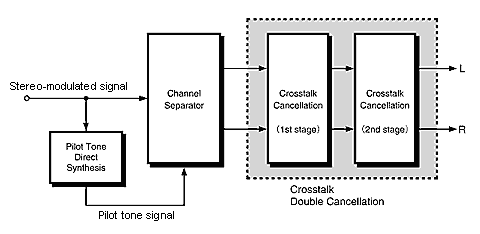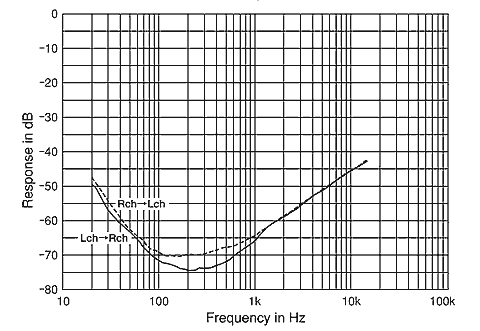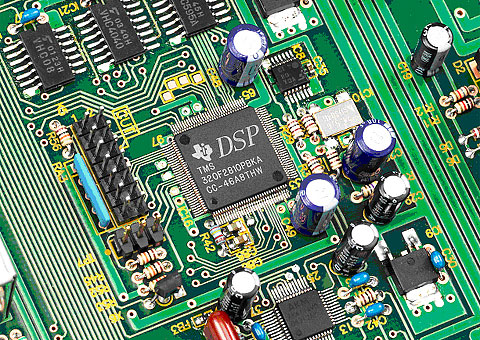DS-DC is a circuit topology used in the FM Tuner T-1000 to demodulate the stereo signal. It combines two techniques, namely "Pilot Tone Direct Synthesis" and "Crosstalk Double Cancellation". Since both of these operations are carried out through software-based arithmetic in a DSP (Digital Signal Processor), ideal demodulation performance becomes possible, resulting in amazing channel separation.
Pilot Tone Direct Synthesis
Stereo information in FM broadcasts is transmitted using the so-called pilot tone multiplex principle. A precisely phase-controlled sum of the left and right channel signals, plus a 38 kHz suppressed subcarrier amplitude-modulated with the left and right difference signal are generated and multiplexed with a 19 kHz pilot signal. At the receiving end, demodulation is carried out using a 38 kHz signal synchronized to the pilot tone to perform a switching operation on the multiplex signal and extract the left and right channel signals.
Commonly, FM tuners employ a PLL circuit to extract the pilot tone and obtain the frequency and phase components from the input signal. If the level of the pilot tone decreases, noise will be heard and stereo separation becomes extremely poor.
With the DS-DC principle developed by Accuphase, the waveform of the pilot tone comprised in the input signal is identified as is (*) and generated directly via an arithmetic operation in the DSP. Consequently, the pilot tone can be extracted reliably even when a high level of noise is present. Good stereo separation can be achieved even when the pilot tone level is low.
* Identification here means to analyze the signal and determine similarities.

DS-DC Type Stereo Demodulator Circuit
Crosstalk Double Cancellation
After the input signal has been separated into the left and right channel components, the circuit eliminates crosstalk using a dual approach that also takes phase components into consideration. The result is extremely high left/right separation.

Stereo Separation Characteristics

 Accuphase Laboratory, Inc.
Accuphase Laboratory, Inc.
enrich life through technology

